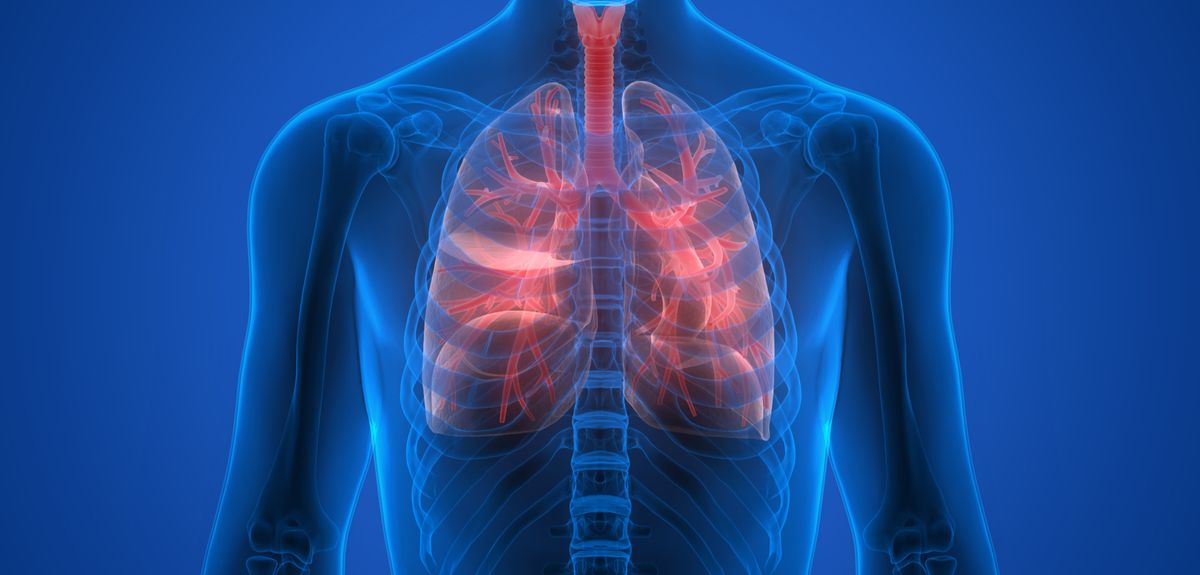
Image credit: Shutterstock
Iron deficiency linked with cardiovascular disease
A new discovery on how iron deficiency affects the vasculature of the lung could hold the key to improving treatment of pulmonary arterial hypertension.
A new paper from the Lakhal-Littleton Group at Oxford’s Department of Physiology Anatomy & Genetics describes the way in which iron deficiency affects human vasculature - in particular the vasculature of the lung.
Iron deficiency is the most common nutritional disorder in the word. Its prevalence is particularly high in patients with cardiovascular diseases, in whom it is associated with poor outcome.
It has been known for some time that iron deficiency predisposes to pulmonary arterial hypertension (PAH). In this condition, the vasculature in the lungs is constricted and remodelled, and this puts pressure on the right side of the heart. For some time it was thought that PAH is caused by anaemia, a condition in which iron deficiency is the underlying mechanism. Consequently, the only consideration given to iron deficiency in the clinical setting has been in the context of correcting anaemia.
However, previous work from this laboratory has shown that iron deficiency within tissues, such as the heart, is sufficient to cause disease even in the absence of anaemia. In the paper, 'An essential cell-autonomous role for hepcidin in cardiac iron homeostasis', Professor Lakhal-Littleton and her team revealed the first study describing the mechanism linking iron deficiency with heart disease.
This new study explores the links between iron deficiency and PAH. It has found that iron deficiency within the smooth muscle cells of the pulmonary arteries is in itself sufficient to cause PAH, even in the absence of anaemia. The effect of iron deficiency is due to increased release of the vasoconstrictor endothelin-1 from cells of the pulmonary arteries.
Professor Lakhal-Littleton and her team were able to reverse and prevent PAH in mice by both iron supplementation and inhibition of endothelin-1 signalling. Consequently, this study provides a mechanistic underpinning for the observation that iron deficiency raises hypoxic pulmonary arterial pressure in healthy individuals and worsens existing PAH in patients.
Ultimately, this paper demonstrates that it is not anaemia, but rather the lack of iron in the cells of the vasculature that is causing the remodelling of the vessels in the lung present in individuals suffering from PAH. Therefore, it strengthens the rationale for correction of tissue iron deficiency independently of the presence or absence of anaemia.
Associate Professor Samira Lakhal-Littleton, said: ‘This research holds potential to alter the way in which patients with pulmonary arterial hypertension are treated.
‘This provides the rationale for giving iron to patients even when they aren't anaemic, because the target is no longer anaemia, but iron deficiency within tissues.’
The full paper, ‘Intracellular iron deficiency in pulmonary arterial smooth muscle cells causes pulmonary arterial hypertension in mice,’ can be read in PNAS.
 New study estimates NHS England spends 3% of its primary and secondary care budget on the health impacts of temperature
New study estimates NHS England spends 3% of its primary and secondary care budget on the health impacts of temperature
 International collaboration launches largest-ever therapeutics trial for patients hospitalised with dengue
International collaboration launches largest-ever therapeutics trial for patients hospitalised with dengue
 Oxford-built multi-agent assistant for cancer care to be piloted in collaboration with Microsoft
Oxford-built multi-agent assistant for cancer care to be piloted in collaboration with Microsoft
 World's first Phase II Nipah virus vaccine trial launch
World's first Phase II Nipah virus vaccine trial launch